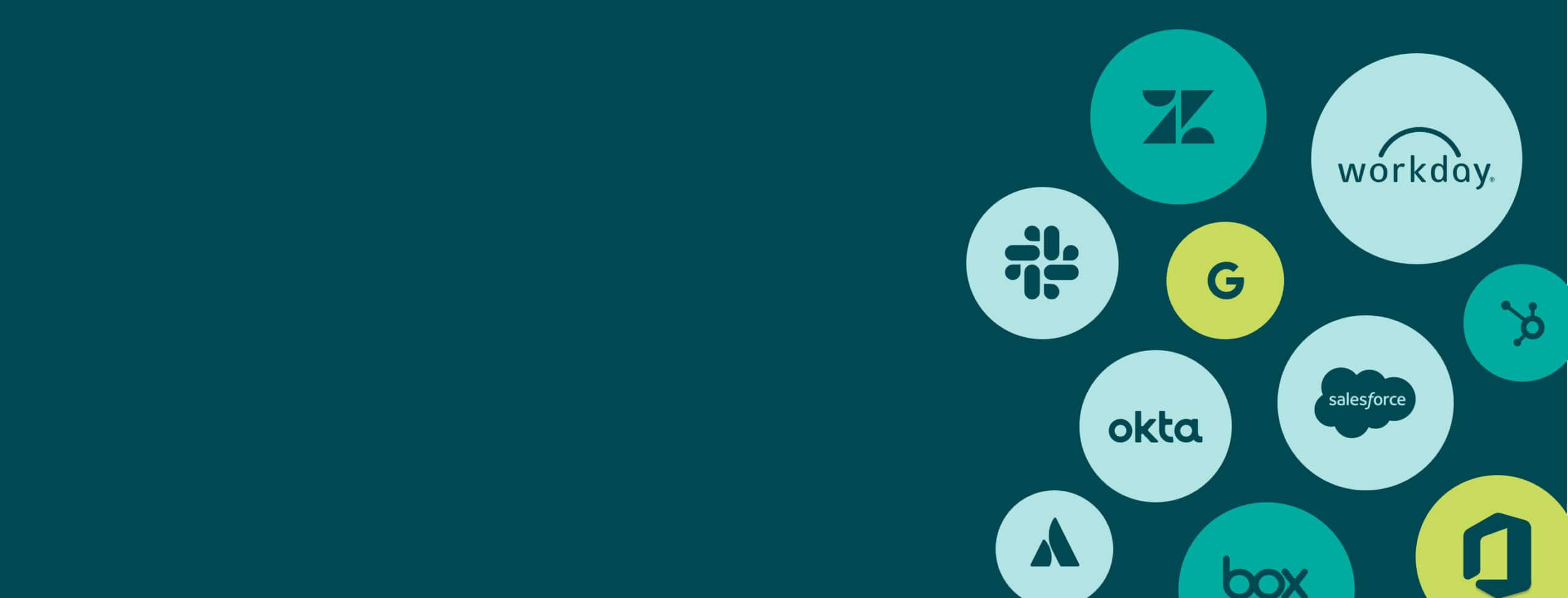
Zoom License Cost 2026: Which Plan Offers the Best Value for Your…
Table of Contents ToggleDefining SaaS ManagementWhy Businesses Need SaaS ManagementHow to...
Back
Back
Search for Keywords...


Table of Contents
SaaS Management is the business practice of discovering, optimizing, and governing an organization’s software-as-a-service (SaaS) applications to control spend, reduce risk, and improve the employee experience. This includes gaining visibility into an organization’s entire SaaS portfolio and establishing a single system of record, optimizing SaaS licenses and subscriptions, rationalizing your portfolio, managing renewals, and ensuring compliance and governance of SaaS applications.
Developed in response to the unique attributes of SaaS applications, SaaS Management has quickly developed into a specialized practice for CIOs and leaders in IT, Procurement, and Software Asset Management.
The goal of SaaS Management is to optimize spend, reduce the risk of unmanaged tools and technologies, increase the value of purchased software, and ultimately increase the effectiveness of users who deploy and use SaaS applications.
ON DEMAND: Why Salesforce Makes SaaS Management a Top Priority
Learn MoreTen years ago, Marc Andreessen made his famous prediction that software is eating the world. But as Bessemer Ventures shared in its 2020 State of the Cloud report, “the cloud is eating software,” and by 2025, more than half of all enterprise software environments will be cloud-based – and the majority of those applications will be SaaS.
SaaS has overtaken business software environments and become the default delivery model for business software today, replacing traditional on-premise deployments. In fact, Gartner predicts that global SaaS spending will exceed $480 billion in 2022.
Part of the reason SaaS is growing so rapidly is because it’s so easy to purchase. As Hugh Drinkwater, Head of Procurement at Carta said: “It’s never been easier to acquire and purchase software as an employee. Swipe a credit card and you’ve got a subscription.”
The ease of purchasing SaaS has changed the business software landscape and IT’s role in the purchase and management of enterprise software. IT is no longer the gatekeeper and the sole department responsible for bringing new tools and technology into the organization. Rather, we’re seeing a more decentralized approach emerge as SaaS vendors are increasingly selling directly to end users and business unit leaders.
In fact, we’ve found that on average, business units control 66% of an organization’s SaaS spend and 40% of its SaaS applications, while IT teams are responsible for 27% of spend and less than a quarter of the organization’s applications. Compared to last year, these stats show that IT teams are controlling a rapidly decreasing portion of an organization’s SaaS, while purchase, budget ownership, and management is shifting toward lines of business.
And while this decentralized purchasing and management of SaaS has many benefits, without the proper visibility and governance, it can also create unnecessary costs and risk. IT teams still need central visibility into an organization’s SaaS. The unmanaged growth of SaaS in an organization can lead to inefficient purchasing, poor budgeting and forecasting, and issues with security and compliance.
With more and more involvement from business units, the process of managing SaaS applications has become increasingly complex. SaaS Management has emerged to simplify this endeavor. SaaS Management makes it easier to discover, optimize, and govern your organization’s SaaS applications. This discipline of SaaS Management is critical to keeping business units and IT aligned and empowering employees with the tools they need to be successful while managing costs and risk.
SaaS Management enables IT, Procurement, and Software Asset Management teams to be more effective by:
As companies increasingly recognize the need for SaaS Management in their organization, a logical next step is to ask, how? How can you get started with SaaS Management?
Based on our experience helping hundreds of companies stand up SaaS Management, we developed the Zylo SaaS Management Lifecycle.
This lifecycle represents an open, flexible framework that any organization can use to start managing their SaaS portfolios more effectively.
You can’t manage what you can’t see. Effective SaaS Management starts with uncovering your entire SaaS inventory. Zylo data shows that the average organization maintains more than 600 applications, yet most organizations drastically underestimate the number of applications in their environment – often by 2-3X.
There are many methods that can be used to discover and inventory your SaaS applications – from manual spreadsheets and cloud access security brokers to web browser plug-ins and single sign-on solutions. However, all of these are imperfect solutions, prone to human error and easy for employees to circumvent.
Ditch the Spreadsheet: How Showpad’s IT and Procurement Teams Re-Imagined Managing SaaS
Learn MoreFinance-based SaaS discovery is the best method for uncovering all SaaS applications in use at your organization. This method of discovery involves analyzing financial records to discover all SaaS purchases. By analyzing Accounts Payable and expense reimbursement records, SaaS applications purchased by IT, business units, and end users can easily be tracked and inventoried.
By following the money, an organization can identify all SaaS applications being used, regardless of how they were purchased and brought into the organization.
Building a System of Record
Beyond just discovering all SaaS in use within the organization, it’s also key to record contract data related to these applications. This data forms a system of record that can be used by technology managers as an automatically updated inventory of SaaS applications.
Continuous Monitoring
Once you establish that system of record of all SaaS applications used throughout your organization, it’s essential to keep that continuously updated. Because SaaS is so easy to purchase, it creates a dynamic environment with multiple applications entering and exiting use at any given time. In fact, Zylo data shows that the average large organization can see as many as 10 new SaaS applications enter their environment every 30 days.
How the Zylo Discovery Engine Powers the Most Comprehensive SaaS Management Platform
Learn MoreAccording to our data, the average organization spends about $4,000 per employee per year to equip their teams with the SaaS tools needed to be productive and effective.
With a SaaS Management program in place, organizations can optimize their SaaS licenses and subscriptions to get the most from their investments.
Reduce SaaS License Waste
Zylo data shows that 40% of all SaaS licenses go unused in a 30-day period, which means that the average 1,000-person organization wastes $2.32 million each month in unused SaaS. With an established discipline, organizations can identify underutilized applications and take immediate action. Is this license genuinely necessary for this employee? Can it be deprovisioned or redeployed to another employee?
Consolidate Duplicate Applications, Redundant Functionality
According to Zylo data, up to 12% of all SaaS applications in a large organization are the result of duplicate purchases. We see this happen most often when multiple departments have purchased the same tool – not knowing other departments in the organization had already been using it. In this scenario, organizations lose purchasing power by not combining their subscriptions for more favorable pricing.
Another common inefficiency is when organizations have multiple applications with redundant functionality, meaning that they perform the same function. To reduce costs, technology managers can identify areas of functional overlap and find opportunities to standardize teams (or the entire organization) on a single tool. Again, this helps maximize purchasing power and offer teams a consistent solution for greater collaboration.
An Insider’s Guide to SaaS Rightsizing and Renewals
Learn MoreTaking a proactive approach to SaaS renewals can make a big impact on the bottom line. Large organizations experience as many as two SaaS renewals every business day. With a SaaS Management strategy, technology managers can get ahead of these renewals and come to negotiations prepared.
Make a Renewal Calendar
The first step to taking control of your renewals is to never let them catch you by surprise – make a SaaS renewal playbook to stay ahead. By creating a system of record for all SaaS applications that includes details like renewal dates and notification periods, you can ensure that you’re always working ahead of schedule. With automatic renewal alerts, software managers have ample time to prepare and can work with business units to review application usage data, current spending, and other criteria to make an informed decision on whether or not to renew. Oftentimes, technology managers can use usage data to negotiate better terms or an appropriate amount of licenses.
The Practical Guide to Rationalizing, Rightsizing and Renewing SaaS
Learn MoreAs mentioned earlier, one the key reasons SaaS applications create uncontrolled costs and risk is due to a lack of governance. SaaS Management helps organizations assign ownership and develop a plan to govern their application portfolio.
Because every organization is unique, SaaS governance models must be adapted to fit every company’s individual needs.
Is innovation the highest priority in your organization? Perhaps you have a greater tolerance for shadow IT. Or perhaps security is of the utmost importance and it’s critical that every application in your environment passes information security assessments.
No matter your situation, SaaS Management helps you establish the proper level of governance for your organization.
Guide to Controlling SaaS Costs and Risk
Learn MoreSaaS is the future of software. Companies in nearly every industry rely on SaaS tools to operate. There’s no question that SaaS will only continue to experience rapid adoption and displace traditional on-premise software.
CIOs, IT, and Procurement leaders must get ahead of this evolution.
Unmanaged and uncontrolled, SaaS applications can create cost overruns, inefficient spending, and exposure to risk.
Organizations that adopt a strong SaaS Management discipline, enabling teams to discover, optimize, and govern their SaaS portfolio stand to reap significant benefits.
2020 SaaS Management Benchmarks
Learn More
Table of Contents ToggleDefining SaaS ManagementWhy Businesses Need SaaS ManagementHow to...

Table of Contents ToggleDefining SaaS ManagementWhy Businesses Need SaaS ManagementHow to...

Table of Contents ToggleKey Themes That Shaped SaaS Management in 20251....

Table of Contents ToggleDefining SaaS ManagementWhy Businesses Need SaaS ManagementHow to...
| Cookie | Duration | Description |
|---|---|---|
| cookielawinfo-checkbox-analytics | 11 months | This cookie is set by GDPR Cookie Consent plugin. The cookie is used to store the user consent for the cookies in the category "Analytics". |
| cookielawinfo-checkbox-functional | 11 months | The cookie is set by GDPR cookie consent to record the user consent for the cookies in the category "Functional". |
| cookielawinfo-checkbox-necessary | 11 months | This cookie is set by GDPR Cookie Consent plugin. The cookies is used to store the user consent for the cookies in the category "Necessary". |
| cookielawinfo-checkbox-others | 11 months | This cookie is set by GDPR Cookie Consent plugin. The cookie is used to store the user consent for the cookies in the category "Other. |
| cookielawinfo-checkbox-performance | 11 months | This cookie is set by GDPR Cookie Consent plugin. The cookie is used to store the user consent for the cookies in the category "Performance". |
| viewed_cookie_policy | 11 months | The cookie is set by the GDPR Cookie Consent plugin and is used to store whether or not user has consented to the use of cookies. It does not store any personal data. |
